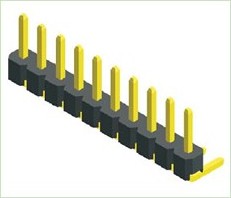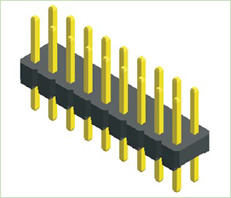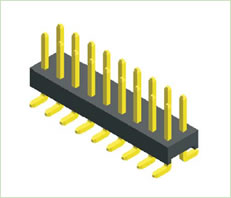If you want to modify the compartment of your beloved car, the owner needs to understand the noise source of the car, the noise source and the degree of influence when driving, and then choose the modification plan according to the needs.
Sources of car noise:
1. Mechanical noise from the vehicle itself;
2. Road noise caused by friction between tire and ground;
3. Wind noise caused by high-speed driving;
4. Mixed noise from outside parties.
Construction of system sound insulation works
The sound insulation project of the system is completed through three steps: vibration reduction, noise reduction and sealing. The doors, trunk, chassis, hood, and roof are all prone to air friction noise, and most of the noise is passed into the car through the car's suspension system, chassis, trunk, and doors. So at least the sound insulation project can not ignore the door and tail box. For the noise of the engine, if the engine's own smooth performance and quiet performance are not excellent, and you don't need the acceleration rumbling that car enthusiasts desire, then it is recommended that you put a layer of film under the hood-B-TOP The special coating can absorb and consume a large amount of engine noise, at the same time can suppress the vibration of the hood and block the heat from the engine, with an efficiency of 97%, and at the same time protect the surface of the car paint from being damaged by high temperature for a long time; in winter or In cold areas, this layer of film can also play a role in thermal insulation to protect the engine compartment from freezing and cracking. Owners and friends need to pay attention that all sound insulation materials must meet the relevant fire rating requirements to ensure vehicle safety and reduce the weight of the car.
Sound listening improved
In order to improve the sound effect, some shops have special speaker kits and a series of measures to improve the bass in the car and optional accessories. The installation of such facilities can effectively improve the sound distortion of the speakers due to panel resonance and greatly increase the sound pressure level, especially to meet the needs of professional audio enthusiasts, so that you can immerse yourself in an environment without interference Enjoying pure music.
Acoustics
Sound is produced by periodic or non-periodic vibration of the sound source.
Physical characteristics of sound
The size of the sound is related to the "sound pressure"; the sharpness of the sound is related to the level of the "audio"; the sound is pleasing and noisy, and the harmony of the "tone". Sound is an energy and a wave. It must be released to the surroundings after it is emitted. The propagation of sound is transmitted through the medium in the form of vibration. The noise in the cabin is propagated through resonance with the car body and is called "structural noise".
From the perspective of environmental protection, noise refers to the sounds that people do not need, disgusting, or hinder human life and work. Noise not only has its objective physical characteristics, but also depends on the assessment of subjective perception. For example, when listening to music, the sweet singing is not noise, but in the classroom where the teacher is teaching, the music played by the treble can only be regarded as noise.
a
The sound can be propagated in the air because the vibrating object causes the local pressure change of the surrounding air through vibration. This pressure change causes the local air to have a local density change, and the local density change causes the air pressure in the farther part to change. Going forward, this pressure change is transmitted to the farther part, which causes the sound to spread.
Sound frequency
The frequency of sound is referred to as audio. For a vibrating object, the number of vibrations per second is the vibration frequency of the object, and the unit of frequency is hertz. Generally speaking, humans can hear sound waves with vibration frequencies between 20 Hz and 20000 Hz. The source of sound waves is called a sound source. Below 20 Hz and above 20,000 Hz belong to the range of infrasound and ultrasound, respectively, and cannot be heard by the human ear. In the sound wave range, the tone changes from low to high as the frequency increases, but in different frequency bands, the perception of the human ear is not consistent. Under normal circumstances, the audio frequency is below 1000 Hz. As the frequency decreases, the hearing will gradually become dull. Therefore, the human ear is easier to tolerate low-frequency noise, but it is more sensitive to high-frequency noise and has poor tolerance. If you live in a loud environment with a high frequency for a long time, it may cause partial or severe hearing loss.
Car noise hazard
The survey shows that motor vehicle noise has accounted for 85% of urban noise. People who are exposed to noise for a long time will have tinnitus, dreaminess, panic and irritability, or directly cause hearing loss or even hearing loss. According to incomplete statistics: traffic accidents caused indirectly by vehicle noise account for 60% of the total traffic accidents.
Sound insulation engineering materials
The materials used in car noise and noise reduction projects vary according to the installation design. The B-TOP series of sound insulation products include shock absorption and sound insulation materials, sound absorption materials, aluminum-coated heat insulation sound insulation and sound absorption materials, etc.
Bitutos series shock absorption and sound insulation materials: mainly used to suppress the transmission of noise and strengthen the treatment of car body steel plates;
Bituto foam foam sound-absorbing material: it has the ability to convert sound waves into heat energy, which can achieve the best sound absorption effect;
Bitutolu engine cover aluminum film thermal insulation and sound absorption material: suitable for use in automobile engine compartments, excellent sound absorption effect, it can reflect up to 97% of heat, reduce the heat transmitted to the engine cover, and extend the service life of the paint surface.
Soundproofing parts
The characteristics of different types of car noise and the sources of noise in various parts of a single car are different. Among them, engine noise accounts for the largest proportion. The vibration and sealing of the engine cover, fire wall, skirt walls and fenders can effectively control and reduce the noise of the engine compartment and reduce the engine noise from being transmitted to the cab. When the vehicle is speeding on a good and straight road, the high-speed noise of the vehicle becomes another major noise source. The trunk is a big noise source, because the inside is a large cavity, which will cause a lot of resonance. Therefore, the addition of noise reduction equipment can not ignore the trunk. The aerodynamic performance of a vehicle usually affects the frictional noise of the vehicle. And the main part that is usually prone to wind noise is the door. Measures to be taken on the doors are nothing more than installing shock-absorbing materials and sound-absorbing materials in the doors, and strengthening the tightness of the doors.
Impact of sound insulation project on the vehicle
Generally speaking, sound insulation works do not need to modify the body structure, power system and electrical oil and gas lines, so owners do not have to worry too much. However, it is recommended that the owner choose a store with complete facilities for modification. Because soundproof construction must be ensured in a sealed, open, clean workshop by a strictly professionally trained installation technician, and during the construction process, the process must be strictly followed to ensure that the car body and interior parts will not be damaged .
Misunderstanding of sound insulation works
There are many car owners who believe that car sound insulation is a very simple job. Just paste or add some materials like felt, asbestos, sponge and other materials in the car to achieve the sound insulation effect. In fact, these materials have very little improvement in the sound of the vehicle. Even because these materials are not environmentally friendly and have poor fire and flame resistance, they will also cause great hidden safety hazards for future vehicle use.
In addition, some car owners feel that their car is noisy because the car itself is malfunctioning, such as irregular tire wear, suspension or chassis damage, and abnormal engine noise. These problems cannot be solved by sound insulation engineering alone. Professional technicians will find the problem for you and suggest that you perform sound insulation treatment after maintenance.
1.ANTENK Male Pin Header Series in Headers are a full range headers in a variety of configurations including Single, Dual and Three rows, Straight or Right Angle in Thru-Hole or SMT mounting. Their close tolerance .025" sq. posts are smoothly finished and taper tipped to eliminate insertion damage to the PCB or mating connector. ANTENK Pin Headers can be easily cut into exact sizes as required. Options include stacked insulator versions and choice of tin, gold or selective gold plating.
Antenk Male Pin Headers Types By Pitch
0.8Mm Male Header
1.0mm Male Header
1.27mm Male Header
2.0Mm Male Header
2.54Mm Male Header
Antenk Male Pin Headers Application
Antenk's Male Pin Header are widely used in electronic equipments,such as monitors ,electronic instruments,computer motherboards,program-controlled switchboards,LED,digital cameras,MP4 players,a variety of removable storage disks,cordless telephones,walkie-talkies,mobile phones,digital home appliances and electronic toys,high-speed train,aviation,communication station,Military and so on.



Male Pin Headers:
SPECIFICATIONS:
Current Rating: 0.75Amp
Insulation Resistance: 1000M ohms min
Contact Resistance: 20M ohms max
Dielectric Withstanding: AC500V
Operating Temperature: -65°C to +125°C
Contact Material: Brass
Insulator Material: PA6T,UL94V-0,Color:Black
Male Pin Headers,Pin Male Straight Box Header,Smd Pin Headers,Long Pin Male Header,Pin Header,Male PCB Connectors
ShenZhen Antenk Electronics Co,Ltd , https://www.antenk.com